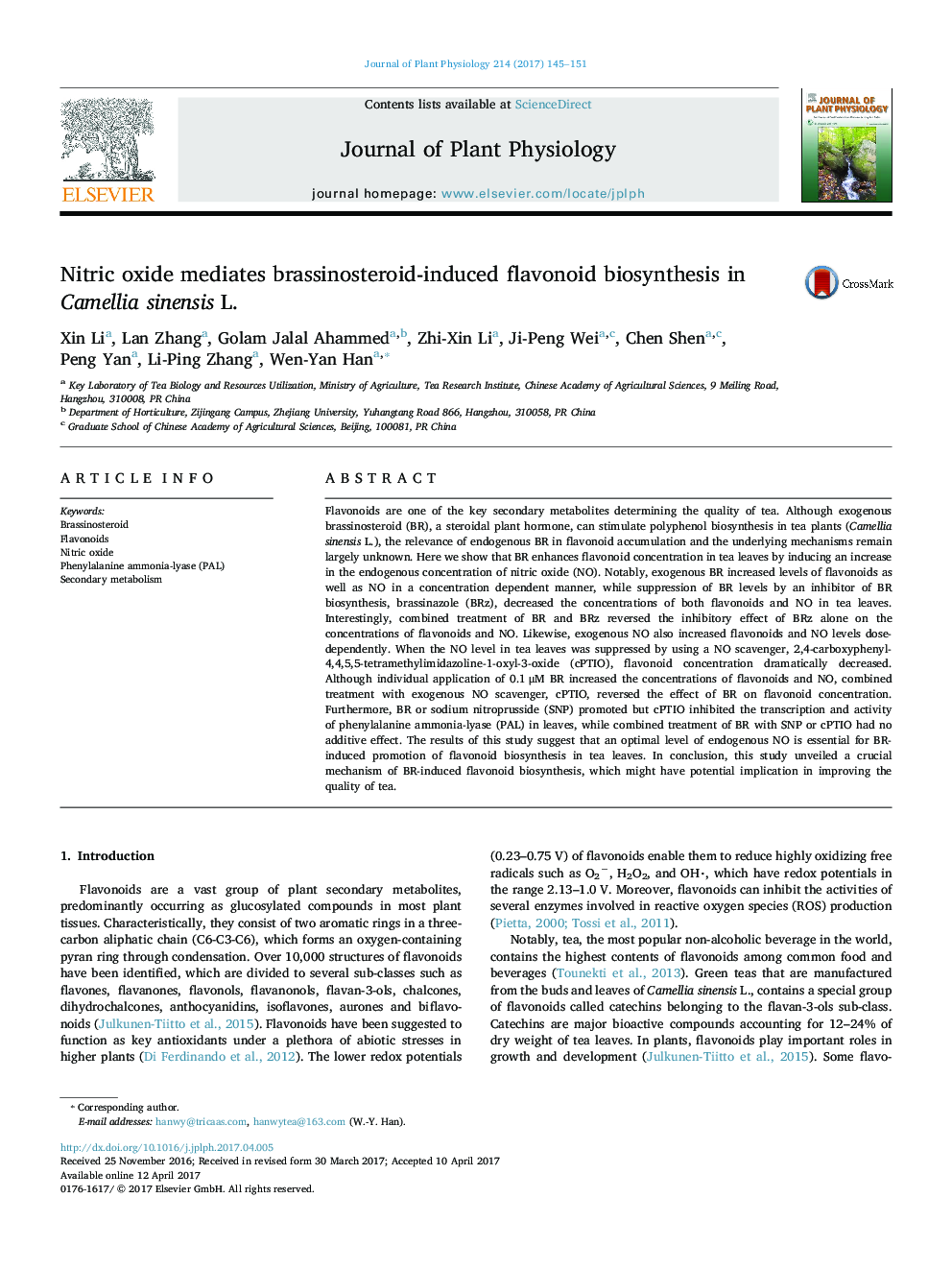| کد مقاله | کد نشریه | سال انتشار | مقاله انگلیسی | نسخه تمام متن |
|---|---|---|---|---|
| 5518083 | 1543864 | 2017 | 7 صفحه PDF | دانلود رایگان |

Flavonoids are one of the key secondary metabolites determining the quality of tea. Although exogenous brassinosteroid (BR), a steroidal plant hormone, can stimulate polyphenol biosynthesis in tea plants (Camellia sinensis L.), the relevance of endogenous BR in flavonoid accumulation and the underlying mechanisms remain largely unknown. Here we show that BR enhances flavonoid concentration in tea leaves by inducing an increase in the endogenous concentration of nitric oxide (NO). Notably, exogenous BR increased levels of flavonoids as well as NO in a concentration dependent manner, while suppression of BR levels by an inhibitor of BR biosynthesis, brassinazole (BRz), decreased the concentrations of both flavonoids and NO in tea leaves. Interestingly, combined treatment of BR and BRz reversed the inhibitory effect of BRz alone on the concentrations of flavonoids and NO. Likewise, exogenous NO also increased flavonoids and NO levels dose-dependently. When the NO level in tea leaves was suppressed by using a NO scavenger, 2,4-carboxyphenyl-4,4,5,5-tetramethylimidazoline-1-oxyl-3-oxide (cPTIO), flavonoid concentration dramatically decreased. Although individual application of 0.1 μM BR increased the concentrations of flavonoids and NO, combined treatment with exogenous NO scavenger, cPTIO, reversed the effect of BR on flavonoid concentration. Furthermore, BR or sodium nitroprusside (SNP) promoted but cPTIO inhibited the transcription and activity of phenylalanine ammonia-lyase (PAL) in leaves, while combined treatment of BR with SNP or cPTIO had no additive effect. The results of this study suggest that an optimal level of endogenous NO is essential for BR-induced promotion of flavonoid biosynthesis in tea leaves. In conclusion, this study unveiled a crucial mechanism of BR-induced flavonoid biosynthesis, which might have potential implication in improving the quality of tea.
Journal: Journal of Plant Physiology - Volume 214, July 2017, Pages 145-151